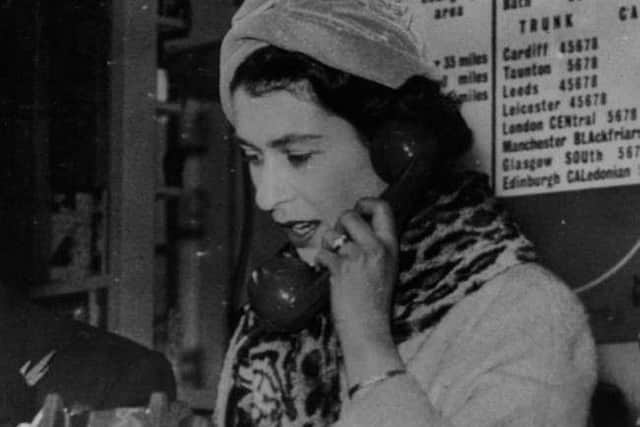Queen's first video call echoes Her Majesty's historic trunk call to Edinburgh in 1950s
With The Queen taking part in her first official video conference call, we are reminded of the occasion more than six decades ago when Her Majesty made telecommunications history by phoning Edinburgh in the UK’s first ever trunk call.
The Queen's life has been steeped in tradition, but she has kept up with the vast technological advances during her reign of nearly 70 years, overseeing the advent of colour television, mobile phones, the internet and social media..
Advertisement
Hide AdAdvertisement
Hide AdIn a royal first, the 94-year-old took part in her first ever official video conference call on Thursday as part of her public duties, following in the footsteps of other royals as engagements have gone online during the coronavirus pandemic.
But it is not the first occasion Her Majesty has participated in a landmark moment involving long-distance communication.
Just five years after her coronation, on December 5, 1958, The Queen’s hushed tones were received by Edinburgh’s Lord Provost more than 350 miles away.
It was the UK’s first ever subscriber trunk dialled telephone call and marked the longest distance a call could be made at the time.
Speaking from the Bristol exchange at Marsh Street, Her Majesty addressed the Capital leader.


"This is the Queen speaking from Bristol. Good afternoon, Lord Provost,” she said.
She then thanked the Lord Provost for his offering of the “loyal greetings” on behalf of the citizens of Edinburgh.
The call lasted two minutes, five seconds and cost 10d (4p).
Advertisement
Hide AdAdvertisement
Hide AdPrior to this new groundbreaking technological feat, people in the UK had to go through an operator when making a call.
A total of 41 manually-operated telephone exchanges were spread across Great Britain in order to handle the traffic.
Keen to modernise and make it easier for people to call abroad, the General Post Office in the UK forked out £35 million overhauling the system.
The investment resulted in the introduction of Subscriber Trunk Dialling – or STD for short.
It should come as no surprise to learn that the system’s abbreviated term has waned in popularity in the decades since.
The UK’s telephone system became fully automatic in 1976 when the GPO closed the country’s last manual exchange at Portree in the Isle of Skye.
The Post Office handed over the running of the UK’s phone system to British Telecom five years later.
A message from the Editor:
Thank you for reading this story on our website. While I have your attention, I also have an important request to make of you.
Advertisement
Hide AdAdvertisement
Hide AdWith the coronavirus lockdown having a major impact on many of our advertisers - and consequently the revenue we receive - we are more reliant than ever on you taking out a digital subscription.
Subscribe to scotsman.com and enjoy unlimited access to Scottish news and information online and on our app. With a digital subscription, you can read more than 5 articles, see fewer ads, enjoy faster load times, and get access to exclusive newsletters and content. Visit https://www.scotsman.com/subscriptions now to sign up.
Our journalism costs money and we rely on advertising, print and digital revenues to help to support them. By supporting us, we are able to support you in providing trusted, fact-checked content for this website.
Joy Yates
Editorial Director
Comments
Want to join the conversation? Please or to comment on this article.